What is a telehandler? These incredible machines are neither myth nor legend, but it’s hard to believe such a genius invention exists. Telehandlers are close to perfection when it comes to a construction machine and can live a long and productive life when cared for properly. The list of possibilities of what you can do with these machines is impressively long. Why is that? Let’s take a look at these machines in detail and find out.

Telehandler design
What is a telehander? A telehandler, also known as a telescopic handler, is a hybrid of a crane and a forklift. It features an extendable boom that has typical elevation angle capacity of 70 degrees and an extension capacity of up to 30 meters, and some can extend even further.
With the load lifting functionality of a forklift and the reach and lifting range of a crane, these machines are a model of versatility. While these machines can be fitted with classic forks as can a forklift, telehandlers can actually be equipped with a range of different attachments, allowing them to complete many tasks on the construction site. They can even be fitted with a platform; in which case they take on the role of a boom lift.
Today there are also a lot of rotating telehandlers, also known as rotary telehandlers, on the market. This type of telehandler has a movement concept capable of 360 degree continuous and 400 degree non-continuous boom rotation, which really expands the possibilities of what you can do with these machines.
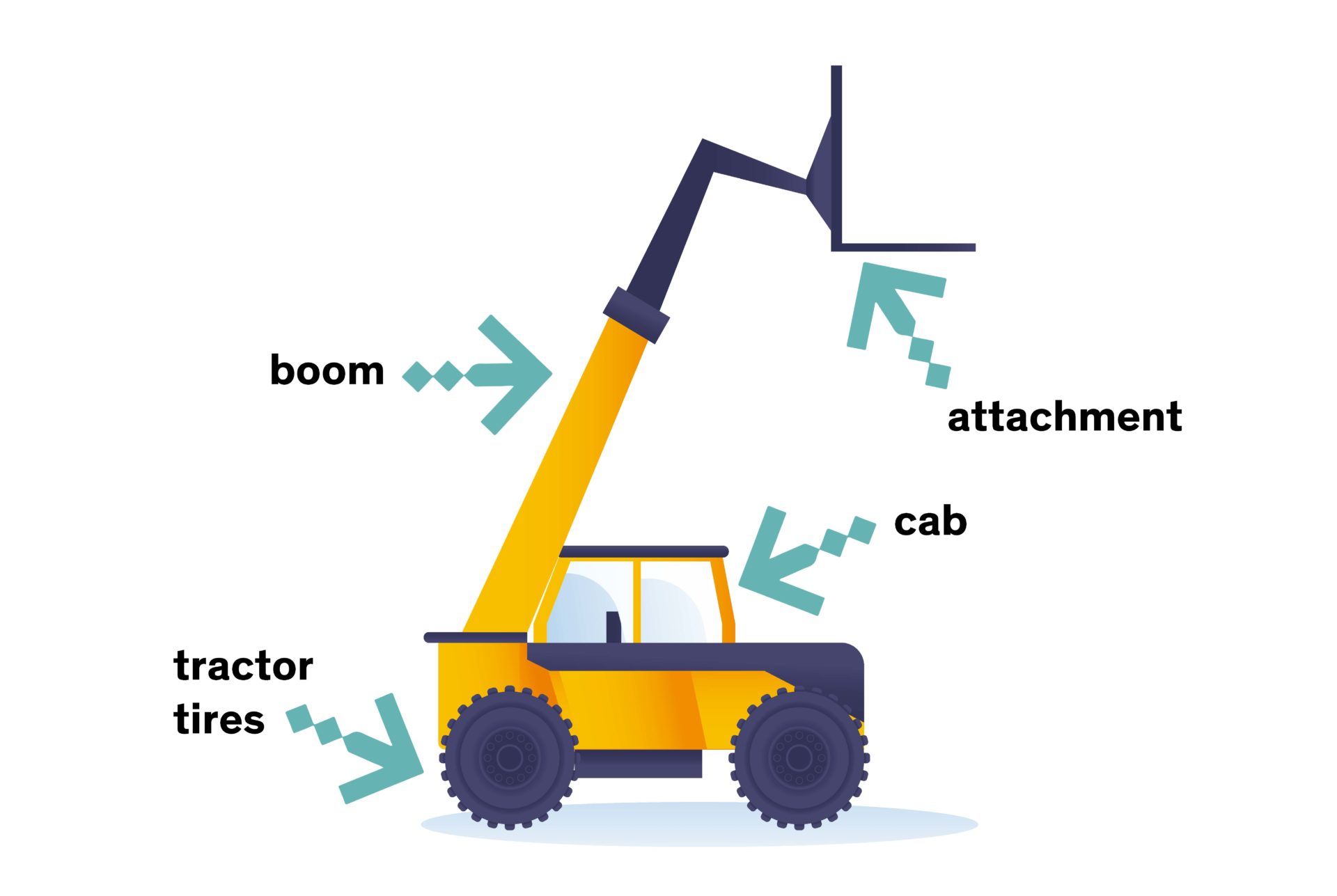
The main components of telehandlers
The cab
What is a telehandler cab? The cab is the heart of the telehandler, because it is where the operator sits and controls the machine. It allows the operator to safely move and carry heavy loads around the job site. Some telehandlers even feature an elevating cab that allows the operator to raise the cabin up several meters from the base and gain more visibility.
The boom
What is a telehandler without its boom? The boom is the telehandler’s long arm that extends out from the chassis, and it is one of the defining elements of these machines. On a standard telehandler the boom can stretch up to around 20 meters and be elevated to an angle of about 70 degrees.
When fully extended, a standard telehandler boom can handle a load of about 9,000 kg. However, the further out the boom extends, the more its weight-bearing capacity diminishes to prevent the machine from tipping over.
Many telehandlers are equipped with outriggers, which secure the machine to the ground and prevent tipping. That said, it’s essential to know the load limitations of your specific telehandler when using the boom.
Tractor tires
Telehandlers feature large tractor tires that make them excellent for operating on rough and uneven terrain. Telehandler tires are equipped with advanced rubber compounds and deep lugs, allowing them to benefit from lower operating costs, longer service life and minimized downtime.
Telehandler Attachments
The role that telehandler attachments play in the magnificence of these machines is undeniable. Along with the cab, boom and tractor tires, they make the telehandler one of the most versatile machines in the construction world.
Telehandlers by the numbers
- 4: the shortest telehandler boom length on the market is 4 meters
- 51: the biggest telehandler on the market has a boom length of 51 meters
- 70: the degree angle to which the extendable boom can be elevated
- 360: degrees of continuous boom rotation that telehandlers have
- 400: degrees of non-continuous boom rotation telehandlers have
- 2,000: the maximum lift capacity (in kg) of the smallest telehandler
- 6,000: the max lift capacity (in kg) of the largest telehandler
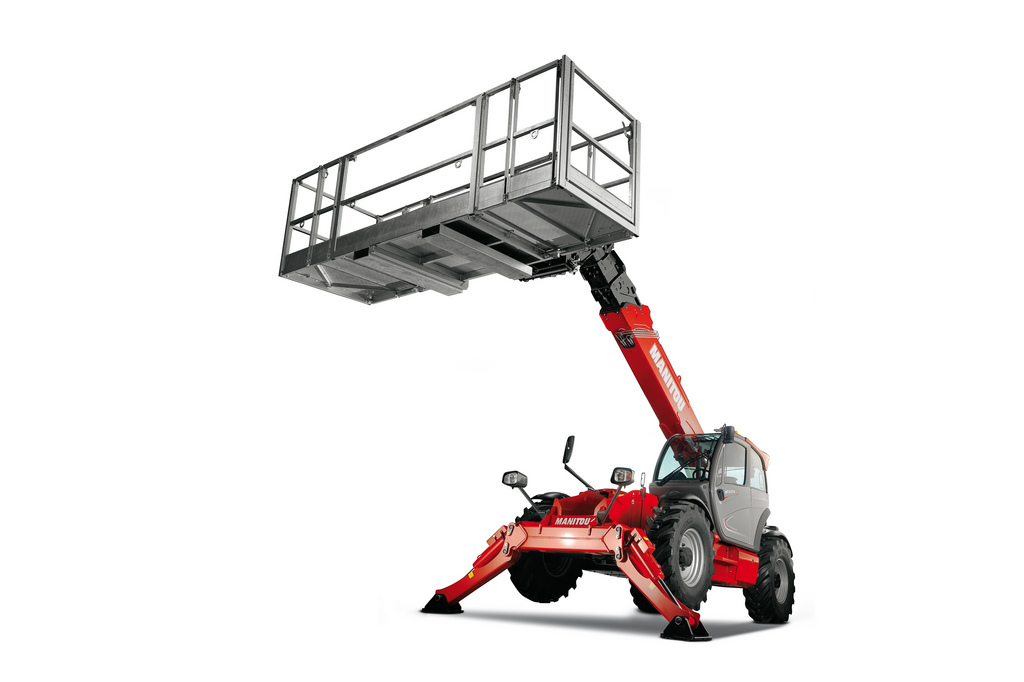
The benefits of telehandlers
The versatility of telehandlers is unrivaled by any other piece of construction equipment. Similar to their parents, the forklift and the crane, telehandlers are capable of all the functions of a forklift or a crane, but also so much more. Let’s take a look at why these machines are so versatile and impressive.
Optimal range of motion
As we mentioned earlier, the telehandler has an exceptional range of motion. For continuous boom rotation, we’re talking 360 degrees, and if we are talking non-continuous, they can get up to 400 degrees of rotation. Operators can keep the machines stationed in a single place, and simply rotate the cabin to easily and efficiently lift and maneuver materials in any direction — up, down, diagonal, around the corner — you name it.
Endless attachment options
What is a telehandler without its attachment? We can’t say enough how incredibly versatile telehandlers are, and the fact that you can pop almost any attachment on them contributes marvelously to our claim. From carrying large pipes, to mounting tires, moving and placing pallets or any other type of materials, telehandlers are only a blessing to any job site. A single machine with endless attachment options gives operators free reign to achieve just about anything.
Stability across a multitude of surfaces and environments
The physical build of the telehandler renders it one of the most stable machines you can bring on to your job site. For outdoor, uneven surfaces and carrying heavy loads in these types of environments, the telehandler is an ideal machine.
In addition, while the leverage device of forklifts is attached directly to the base of the machine, making it prone to toppling forward with excessively heavy loads, the telehandler’s leverage device is independent of the base. This makes them much more stable and safer to operate, as they can lift, maneuver and transfer cargo without moving the base. Telehandlers are also equipped with rear weights to counteract the bulk weight of whatever it is moving or lifting.
Today’s major telehandler manufacturers and models
There are a growing number of manufacturers that are having a go at the telehandler design in today’s market. Below are a few of the bigger names, and if you are looking for a telehandler rental, consider one of the models of rotating and fixed telehandlers below.
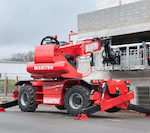
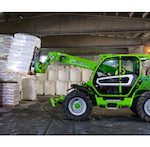
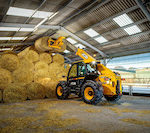
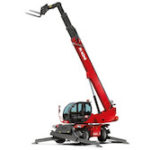
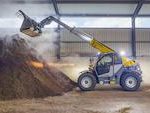
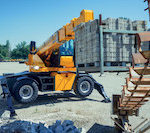
Manitou
Rotating telehandlers:
Fixed telehandlers:
Make your next telehandler rental request on rentmas
Things to consider when selecting your telehandler rental
Type of work
There are a lot of telehandler manufacturers and size ranges on the market today, and not all of them are right for your job. When choosing a telehandler rental, make sure to take into consideration:
- the machine’s size constraints — how much load are you going to be lifting and how far do you need the telescopic arm to extend?
- the type of job you are doing — what exactly will you need to use the telehandler for? Will you need special telehandler attachments?
- your maneuvering needs — will you need a rotating cabin?
The load
The bulk of the material you will be lifting and moving is counteracted by the telehandler’s rear weights. That said, the further outwardly extended the boom, the lower the weight capacity. Thus, before going through with your telehandler rental, you should not only take into consideration the weight of the load you will need to carry, but also the height and boom angle.
Get to know the vast world of telehandler attachments
What is a telehandler without its attachment? There is a wealth of attachment options to use with a telehandler. We suggest that you educate yourself on the different telehandler attachments and determine which will allow you to best carry out your work in an effective and efficient way.
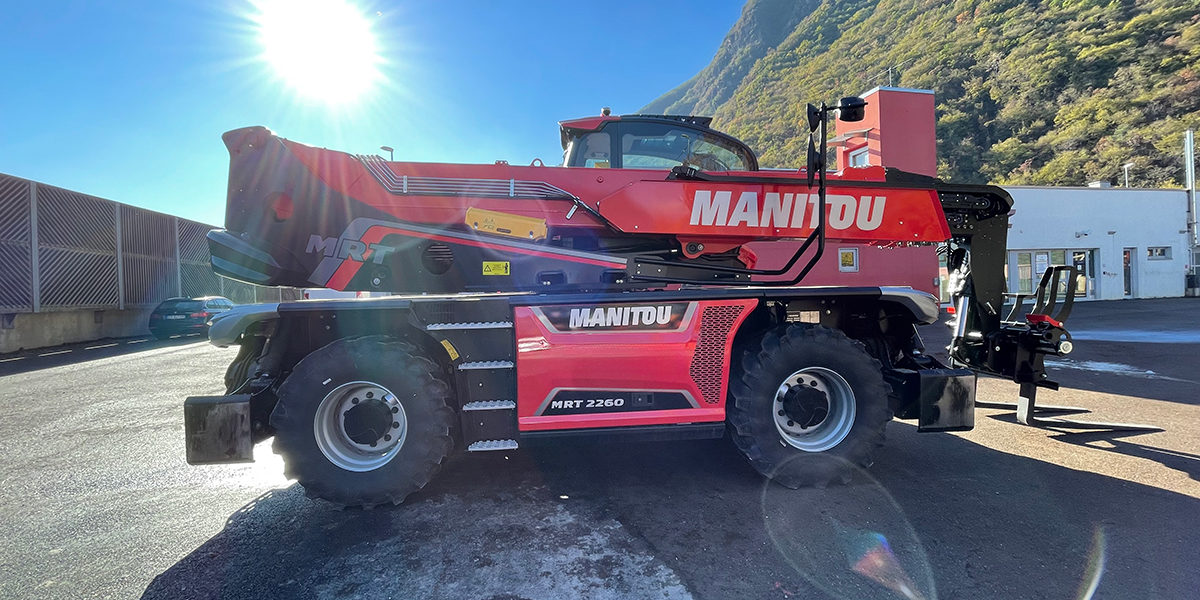



 Merlo ROTO 45.21
Merlo ROTO 45.21




